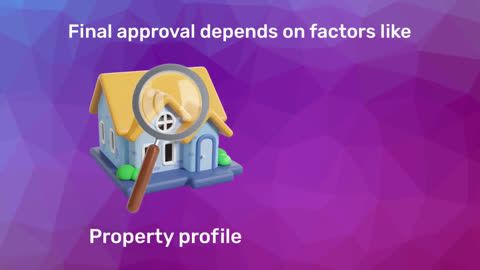Buying a house is a dream for many, but not everyone finds it easy to access affordable home financing. This is where the concept of housing loans under the priority sector comes into play. Priority sector lending (PSL) is an initiative by the Reserve Bank of India (RBI) to ensure that certain sectors receive adequate credit from financial institutions. Housing loans are a crucial part of this initiative, especially for borrowers from weaker economic backgrounds and those looking to buy or build affordable homes.
In this article, we will explore what housing loans under the priority sector mean for borrowers, who qualifies, and the benefits of availing such loans.
What is Priority Sector Lending?
Priority Sector Lending (PSL) is an initiative by the Reserve Bank of India (RBI) that mandates banks and financial institutions to direct a certain portion of their lending towards sectors crucial for the economy and society. These sectors include agriculture, education, small-scale industries, and housing.
Under PSL, housing loans are targeted toward the economically weaker sections and individuals looking to buy affordable homes. The scheme ensures that individuals who might not qualify for regular loans due to low income or limited credit history can access affordable financing options. The goal of PSL in housing is to boost homeownership, especially in rural areas and among the underprivileged.
What are housing loans under the priority sector?
The Reserve Bank of India mandates that banks and financial institutions direct a certain percentage of their lending towards specific sectors that are crucial for economic growth and social welfare. This is known as Priority Sector Lending (PSL). Sectors included under PSL are agriculture, education, small businesses, and housing.
When it comes to housing loans under the priority sector, financial institutions are required to offer loans for affordable housing projects or to individuals who meet specific criteria. This initiative is aimed at promoting homeownership among Economically Weaker Sections (EWS), Lower Income Groups (LIG), and other underserved segments of society.
Eligibility criteria for priority sector housing loans
Housing loans under the priority sector are generally extended to individuals who fit the following categories:
1. Economically Weaker Section (EWS): Individuals with an annual household income of up to Rs. 3 lakh.
2. Lower Income Group (LIG): Individuals with an annual household income between Rs. 3 lakh and Rs. 6 lakh.
3. Affordable housing projects: Loans are also offered to developers and builders involved in affordable housing projects aimed at the EWS and LIG categories.
4. Rural housing: Housing loans for rural development and construction of houses in rural areas also fall under the priority sector.
These housing loans come with benefits like lower interest rates, longer repayment tenures, and relaxed eligibility criteria. Furthermore, the maximum loan amount and property size that qualifies for PSL differ for metropolitan and rural areas, making it accessible to a broader range of borrowers.
Benefits of housing loans under the priority sector
Housing loans classified under the priority sector come with several advantages for borrowers, particularly those who might not qualify for traditional home loans due to low income or limited credit history. Here are some key benefits:
1. Lower interest rates: One of the most significant benefits of PSL housing loans is the lower interest rate. Financial institutions offer these loans at reduced interest rates compared to regular home loans, making homeownership more affordable for individuals from the EWS and LIG categories.
2. Longer repayment tenure: Borrowers under PSL are often given the advantage of extended repayment tenures, which reduces the burden of monthly EMIs (equated monthly instalments). This makes it easier for borrowers to repay their housing loans without stretching their finances too thin.
3. Easy eligibility criteria: Priority sector loans come with more relaxed eligibility requirements. This is crucial for borrowers with lower incomes or inconsistent credit histories, as traditional home loan providers might be more stringent. Under PSL, the focus is more on providing accessible credit rather than maintaining strict income thresholds.
4. Encourages affordable housing: One of the broader goals of the PSL initiative is to encourage the development of affordable housing projects. Builders and developers engaged in constructing homes for EWS and LIG categories benefit from easier access to finance, thus speeding up the development of affordable housing infrastructure across the country.
5. Inclusive growth: The housing loan priority sector aims to foster financial inclusion. By enabling individuals from weaker economic backgrounds to own a home, PSL housing loans contribute to a more equitable society, narrowing the gap between the rich and the poor.
6. Tax benefits: Like other home loans, housing loans under PSL also provide the benefit of tax deductions. Borrowers can claim deductions under Section 80C for the principal repayment and under Section 24(b) for the interest paid on the home loan. This helps reduce the overall financial burden.
How to apply for a housing loan under the priority sector?
Applying for a housing loan under the priority sector is quite similar to applying for a traditional home loan. Here is how you can go about it:
1. Check your eligibility: First, ensure that you meet the criteria for EWS or LIG or are planning to buy a house that qualifies as part of an affordable housing project. Some banks also extend loans for rural housing under the PSL scheme.
2. Choose the right lender: Not all banks and financial institutions may offer housing loans under PSL. Look for a lender that complies with RBI's PSL mandates.
3. Submit documentation: Once you choose a lender, gather the required documents such as proof of income, identity, and property-related documents. For PSL housing loans, your income documents will play a crucial role in establishing your eligibility under the EWS or LIG category.
4. Get loan approval: Upon submission, the lender will review your application. If your loan qualifies as part of the priority sector, you can benefit from lower interest rates and other advantages.
5. Loan disbursement: Once the loan is approved, the disbursement follows, and you can proceed with your home purchase or construction.
Key documents required for priority sector housing loans
To apply for a priority sector housing loan, you will need to provide the following documents:
- Identity proof: Aadhaar Card, PAN card, voter ID, or Passport.
- Income proof: Salary slips, bank statements for the last 6 months, Income Tax Returns (ITR) for the last 2 years (self-employed), or Form 16.
- Property documents: Sale deed, title deed, NOC from the builder (if applicable), and approved building plan.
- Address proof: Utility bills, ration card, or driving licence.
- Additional documents: Passport-sized photographs and employment details (for salaried individuals).
These documents help lenders verify your eligibility and property details.
Important Links: What is Home Loan | Home Loan Interest Rates | Home Loan Eligibility Criteria | Documents Required for Home Loan | Home Loan Balance Transfer | Joint Home Loan | Home Loan Tax Benefits | Home Loan Subsidy
Priority Sector Lending vs. regular housing loans
While housing loans under the priority sector have numerous advantages, it is essential to understand how they compare to traditional home loans. Here is a brief comparison:
| Feature | Priority sector housing loan | Regular home loan |
| Interest rate | Lower than standard rates | Higher for low-income groups |
| Loan amount limit | Capped based on property size and location | Higher loan amounts are available |
| Eligibility criteria | Relaxed, focuses on EWS/LIG | Stricter income/credit score requirements |
| Tax benefits | Available | Available |
| Repayment tenure | Longer tenure options | Flexible but based on loan amount |
Priority sector housing loans are designed to make homeownership more accessible to individuals from economically weaker backgrounds. With benefits like lower interest rates, longer repayment tenures, and relaxed eligibility criteria, these loans provide a viable solution for those who might otherwise struggle to afford a home.




